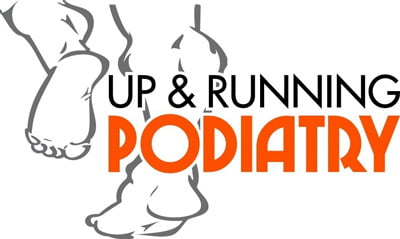A high ankle sprain is a distinctive injury involving the ligaments connecting the tibia and fibula, known as the syndesmosis.
Unlike common ankle sprains that affect the ligaments surrounding the ankle joint, high ankle sprains involve the distal tibiofibular syndesmosis—the fibrous tissue that connects the tibia and fibula just above the ankle. This injury often results from forceful external rotation or hyperdorsiflexion (upward bending) of the foot, leading to overstretched or torn syndesmotic ligaments.
Causes
High ankle sprains frequently occur during activities that involve sudden twisting or impact while the foot is flexed upward. Common causes include:
- Sports Injuries: Athletes participating in sports like football, soccer, and skiing are particularly susceptible due to rapid and forceful twisting movements (Strathcona Physical Therapy).
- Accidents: Falls or collisions that force the foot into an awkward, flexed position can also lead to this injury.
Symptoms
Identifying a high ankle sprain involves recognizing specific symptoms:
- Pain: Typically localized above the ankle joint, especially during walking or foot rotation.
- Swelling and Bruising: These may develop higher up the leg compared to typical ankle sprains.
- Difficulty Bearing Weight: Activities like walking or climbing stairs become painful and challenging.
- Tenderness: The area between the tibia and fibula is often sensitive to touch.
Diagnosis
Due to the complexity of high ankle sprains, medical evaluation is crucial:
- Physical Examination: Healthcare providers perform specific tests, such as the syndesmosis squeeze test, to assess pain and stability.
- Imaging Studies: X-rays may be utilized to exclude fractures, while MRI scans offer detailed images of soft tissue injuries, including ligament tears (Cleveland Clinic).
Treatment
Management strategies depend on the injury's severity:
- Conservative Approach: Initial treatment often follows the RICE protocol (Rest, Ice, Compression, Elevation). Immobilization with a cast or boot may be employed to stabilize the ankle (Orthopedics at Washington University).
- Physical Therapy: Once acute symptoms diminish, therapy focuses on restoring range of motion, strength, and balance.
- Surgical Intervention: In severe cases, surgical procedures, such as syndesmosis repair, may be necessary to restore stability (Patient Orthopedia).
Recovery
Healing from a high ankle sprain is typically more prolonged than that of a standard ankle sprain:
- Timeframe: Recovery often spans 6 to 8 weeks, though it can extend longer, especially for athletes (Cleveland Clinic).
- Rehabilitation: Adherence to a structured rehab program is vital to regain full function and prevent future injuries.
Prevention
To reduce the risk of high ankle sprains:
- Strength and Flexibility Training: Regular exercises enhance muscle support and flexibility around the ankle.
- Proper Footwear: Wearing supportive shoes is essential, particularly on uneven surfaces or during high-risk activities.
- Functional Testing: Undergoing assessments can identify potential weaknesses or imbalances, allowing for targeted preventive measures.
If you're interested in evaluating your risk for ankle injuries and learning preventive strategies, consider exploring our Functional Testing services.
Understanding the nuances of high ankle sprains facilitates appropriate treatment and effective recovery. If you suspect such an injury, consulting a healthcare professional is essential for optimal care.
